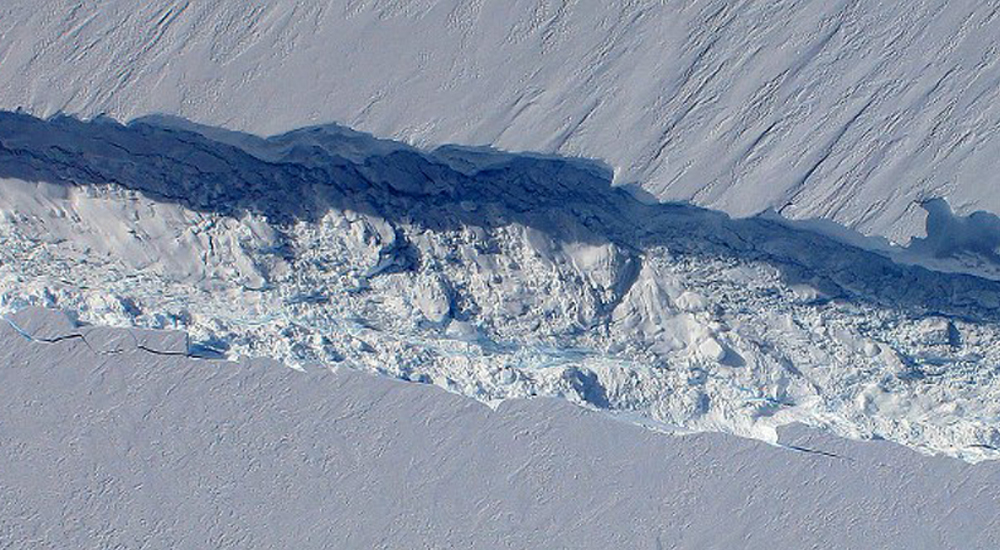
PARIS, France – Even if humanity stopped emitting greenhouse gases tomorrow, Earth will warm for centuries to come and oceans will rise by metres, according to a controversial modelling study published Thursday, November 12, 2020.
Natural drivers of global warming — more heat-trapping clouds, thawing permafrost, and shrinking sea ice — already set in motion by carbon pollution will take on their own momentum, researchers from Norway reported in the Nature journal Scientific Reports.
“According to our models, humanity is beyond the point-of-no-return when it comes to halting the melting of permafrost using greenhouse gas cuts as the single tool,” lead author Jorgen Randers, a professor emeritus of climate strategy at the BI Norwegian Business School, told AFP.
“If we want to stop this melting process we must do something in addition — for example, suck CO2 out of the atmosphere and store it underground, and make Earth’s surface brighter.”
Using a stripped-down climate model, Randers and colleague Ulrich Goluke projected changes out to the year 2500 under two scenarios: the instant cessation of emissions, and the gradual reduction of planet warming gases to zero by 2100.
In an imaginary world where carbon pollution stops with a flip of the switch, the planet warms over the next 50 years to about 2.3 degrees Celsius above pre-industrial levels — roughly half-a-degree above the target set in the 2015 Paris Agreement — and cools slightly after that.
Earth’s surface today is 1.2C hotter than it was in the mid-19th century, when temperatures began to rise.
But starting in 2150, the model has the planet beginning to gradually warm again, with average temperatures climbing another degree over the following 350 years, and sea levels going up by at least three metres.
Under the second scenario, Earth heats up to levels that would tear at the fabric of civilisation far more quickly, but ends up at roughly the same point by 2500.
– ‘Tipping points’ –
The core finding — contested by leading climate scientists — is that several thresholds, or “tipping points”, in Earth’s climate system have already been crossed, triggering a self-perpetuating process of warming, as has happened millions of years in the past.
One of these drivers is the rapid retreat of sea ice in the Arctic.
Since the late 20th century, millions of square kilometres of snow and ice — which reflects about 80 percent of the Sun’s radiative force back into space — have been replaced in summer by open ocean, which absorbs the same percentage instead.
Another source is the thawing of permafrost, which holds twice as much carbon as there is in the atmosphere. The third is increasing amounts of water vapour, which also has a warming effect.
Reactions from half-a-dozen leading climate scientists to the study — which the authors acknowledge is schematic — varied sharply, with some saying the findings merit follow-up research, and others rejecting it out of hand.
“The model used here is … not shown to be a credible representation of the real climate system,” said Richard Betts, head of climate impacts research at the University of Exeter.
“In fact, it is directly contradicted by more established and extensively evaluated climate models.”
Mark Maslin, a professor of climatology at University College London, also pointed to shortcomings in the model, known as ESCIMO, describing the study as a “thought experiment.”
“What the study does draw attention to is that reducing global carbon emissions to zero by 2050” — a goal championed by the UN and embraced by a growing number of countries — “is just the start of our actions to deal with climate change.”
Even the more sophisticated models used in the projections of the UN’s scientific advisory body, the IPCC, show that the Paris climate pact temperature goals cannot be reached unless massive amounts of CO2 are removed from the atmosphere.
One way to do that is planting billions of trees. Experimental technologies have shown that sucking CO2 out of the air can be done mechanically, but so far not at the scale required.